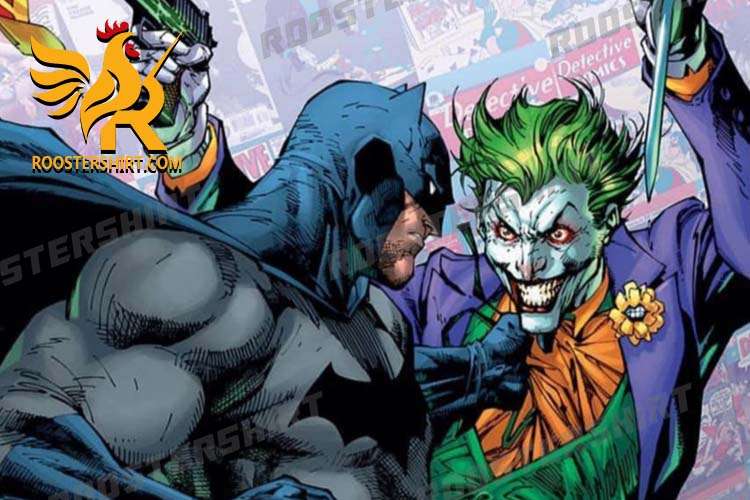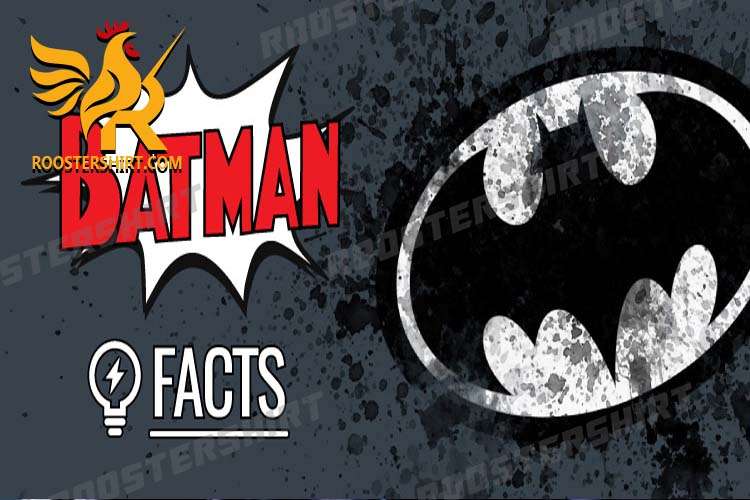News
Discover 50 Facts About Batman
Batman is one of the most iconic and beloved superheroes of all time, and his popularity has only grown over the years. In this blog post, we will uncover 50 fascinating facts about the Dark Knight himself, Batman.
=> Explore the collection exclusively for Batman fans: Batman Ugly Christmas Sweater
1. Batman was created by artist Bob Kane and writer Bill Finger and first appeared in Detective Comics #27 in 1939.
2. Unlike other superheroes, Batman possesses no superhuman powers. Instead, he relies on his intelligence, physical prowess, martial arts training, and advanced technology to fight crime.
3. Gotham City is often portrayed as Batman’s primary base of operations. It is a dark and crime-ridden city that serves as a reflection of Batman’s own inner turmoil.
4. Bruce Wayne, Batman’s alter ego, is a billionaire playboy who inherited his fortune from his parents after their tragic murder. He uses his wealth to fund and develop his crime-fighting gadgets and vehicles.
5. The Bat-Signal, a spotlight-shaped insignia in the shape of a bat, is a symbol used by the Gotham City Police Department to summon Batman for assistance.
6. Batman’s iconic costume, with its bat-shaped emblem, cape, cowl, and utility belt, has gone through various alterations and modifications over the years.
7. The Batmobile, Batman’s primary mode of transportation, has been depicted in numerous forms, ranging from sleek and futuristic designs to more gritty and practical versions.
8. Batman has one of the most extensive rogue’s galleries in the comic book world. Memorable villains include The Joker, Two-Face, The Riddler, Catwoman, and Poison Ivy.
9. The Joker, Batman’s arch-nemesis, is often portrayed as a deranged criminal mastermind who thrives on chaos and unpredictability. Heath Ledger’s portrayal of the character in “The Dark Knight” earned him a posthumous Academy Award for Best Supporting Actor.

10. Batman’s steadfast rule against killing, known as “The Batman No-Kill Rule,” is a defining aspect of his character and distinguishes him from more morally ambiguous superheroes.
11. The Batcave, Batman’s secret headquarters beneath Wayne Manor, serves as his base of operations and houses his crime-fighting arsenal, including the Batcomputer and a vast collection of equipment.
12. Batman’s sidekick and protégé, Robin, has gone through various iterations, including Dick Grayson, Jason Todd, Tim Drake, and Damian Wayne.
13. Batman’s martial arts skills are the result of intense training he underwent in various disciplines, including ninjutsu, judo, and Krav Maga.
14. Batman’s detective skills are legendary, and he is often referred to as “The World’s Greatest Detective.”
15. Batman’s aversion to guns and preference for non-lethal weapons stems from his tragic childhood experience of witnessing his parents’ murder.
16. Batman has been a member of various superhero teams, including the Justice League, the Outsiders, and Batman Incorporated.
17. The Batwing, a high-tech aircraft resembling a bat, is another one of Batman’s vehicles used for aerial combat and transportation.
18. Batman’s iconic catchphrase, “I’m Batman,” has become a cultural phenomenon and often parodied in popular media.
19. The Bat-Suit is made from a reinforced Kevlar-like material, providing protection against physical attacks.
20. Batman’s struggle with his dual identity and personal demons is a recurring theme explored in many comics and films.
21. Bane, a physically imposing villain known for his intelligence and brute strength, famously broke Batman’s back in the “Knightfall” storyline.
22. Batman has been portrayed by various actors in live-action adaptations, including Michael Keaton, Christian Bale, and Ben Affleck.
23. Adam West’s portrayal of Batman in the campy 1960s television series became synonymous with the character and helped popularize Batman among mainstream audiences.
24. Batman has appeared in numerous animated series and films, with Kevin Conroy’s voicework in “Batman: The Animated Series” often considered one of the definitive portrayals of the character.
25. The Bat-Signal has become a recognizable symbol beyond the realm of comics, often used to represent justice and the fight against crime.
26. Batman’s intellect and strategic planning skills make him an exceptional leader, and he often takes charge in dire situations.
27. Batman’s utility belt contains various gadgets and tools, including Batarangs, smoke pellets, grappling hooks, and a miniature explosives kit.
28. The Lazarus Pit, a naturally occurring restorative pool, is used by Batman’s allies and enemies, including Ra’s al Ghul, to heal injuries and achieve immortality.
29. Bruce Wayne’s experiences and training as a young man traveling the world were depicted in the comic book series “Batman: Year One” and later adapted in Christopher Nolan’s film “Batman Begins.”
30. Batman has a complex relationship with Commissioner James Gordon, who is often portrayed as a trusted ally and friend.
31. Tim Burton’s 1989 film “Batman” was the first big-screen adaptation in the modern era and helped revitalize interest in the character.
32. Batman has been featured in countless video games, including the critically acclaimed “Batman: Arkham” series, which allowed players to step into Batman’s shoes and explore Gotham City.
33. Batman’s rogue’s gallery has had a significant influence on popular culture, with characters like The Joker becoming symbols of chaos and madness.
34. Batman’s detective skills and logical reasoning have earned him a reputation as one of the most intelligent characters in the DC Universe.
35. Batman’s portrayal in Frank Miller’s graphic novel “The Dark Knight Returns” revolutionized the character, presenting a grittier, more mature version of Batman.
36. In the alternate future storyline “Batman Beyond,” an elderly Bruce Wayne mentors Terry McGinnis, his successor as Batman, who operates in a high-tech Gotham City.
37. Batman’s no-kill rule has occasionally been challenged, leading to debates about the moral limits of vigilantism.
38. Batman’s tragic origin story has been depicted numerous times, highlighting the impact of his parents’ deaths on his transformation into the Dark Knight.
39. Batman’s resourcefulness and ability to adapt to various situations make him a formidable opponent, even against superpowered adversaries.
40. Batman’s butler and confidant, Alfred Pennyworth, often provides emotional support and practical assistance in his crime-fighting endeavors.
41. Batman’s partnership with Superman, often referred to as the “World’s Finest,” has been a prominent feature in both comics and films.
42. Batman’s symbol, resembling a bat in flight, has become one of the most recognizable icons in popular culture.
43. Batman’s enemies often mirror different aspects of his personality, with characters like Two-Face representing duality and the struggle between good and evil.
44. The animated film “Mask of the Phantasm” is often regarded as one of the best Batman films, exploring the emotional depth of the character.
45. “The Killing Joke,” a graphic novel by Alan Moore, delves into the complex dynamic between Batman and The Joker, questioning the nature of their eternal conflict.
46. Batman’s gritty and grounded approach to crime-fighting distinguishes him from other superheroes, making him resonate with audiences seeking a more realistic portrayal of heroism.
47. Batman’s popularity has led to various spin-off characters, such as Batgirl, Nightwing, and Huntress, who have developed their own unique identities and storylines.
48. In the acclaimed comic book storyline “Hush,” Batman faces off against a mysterious villain who manipulates his friends and enemies against him.
49. Batman’s tragic and brooding nature has helped establish him as a figure of both fear and hope, embodying the human capacity for resilience and perseverance.
50. Batman’s enduring legacy as a symbol of justice and determination has made him an inspiration to countless fans worldwide, transcending generations and cultural boundaries.
See more:
Batman’s journey as a crime-fighter has captivated audiences for over 80 years, and his enduring popularity is a testament to the timeless appeal of the Dark Knight. Whether it’s his iconic costume, his morality-driven mission, or his unforgettable villains, Batman continues to stand as a symbol of hope in a world consumed by darkness.


